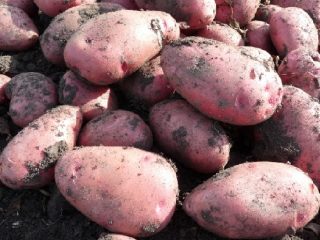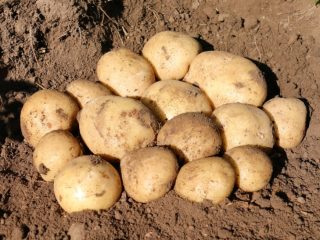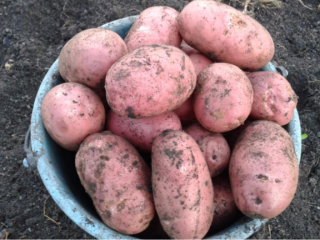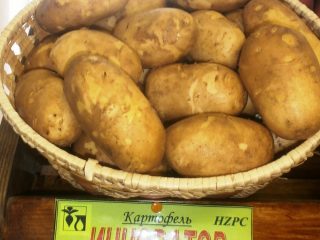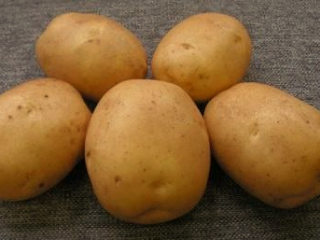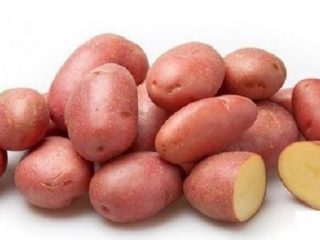Content
The main criteria that gardeners focus on when choosing a new potato variety are taste, “culinary” versatility, keeping quality and good yield. All of them correspond to the recently launched German Madeira potatoes. In addition, varietal characteristics include general endurance, undemanding agricultural technology and good immunity, which cannot but have a positive effect on its “competitiveness.”
History of selection
Madeira potatoes became available for sale in Europe in the early 2010s. The variety was bred by breeders of the company Europlant Pflanzenzucht GMBH, for brevity most often called simply “Europlant”. She specializes in potatoes and has a thoughtful and thorough approach to her work. The creation of a new variety takes 8-10 years.
An application for registration of Madeira potatoes in the Russian Federation was submitted in 2014.In three years, it successfully passed all the necessary variety tests and was included in the State Register of Breeding Achievements. Now you can buy tubers produced not only by the originator, but also by its Russian subsidiaries - RusEuroPlant JSC and RusEuroPlant-Trade LLC. Licenses are also issued to domestic companies, for example, Agrosfera LLC.
Description of Madeira potatoes with photos
Madeira potatoes have appeared on the market relatively recently. But the existing cultivation experience and reviews from gardeners are enough to confirm its compliance with the description given by the originator.
Bush
The bushes are of medium height (50-60 cm), not too spreading. Stems are semi-erect. The leaf blades are of a typical rich green color, relatively small, and can be either completely open or “intermediate.” The flowers are most often large, white or very lavender.
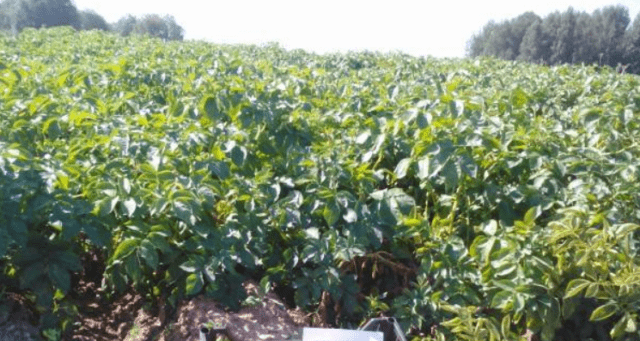
You can plant Madeira potatoes in the beds quite tightly
Tubers
The average weight of a Madeira potato tuber is 105-135 g. The shape is regular, round-oval. “Eyes” are few in number, superficial (less often of medium depth). The peel is thin, quite durable, beige-yellow, slightly mesh. The flesh is creamy or has the shade of butter. There is little starch in it (13-16%). Therefore, it is quite dense and does not lose its shape during heat treatment, despite a certain “wateriness”.
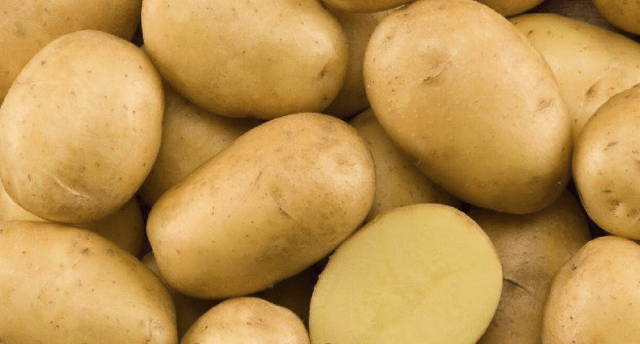
The external presentability of Madeira potato tubers is undoubtedly one of the “captivating” points influencing the choice of gardeners
Characteristics of Madeira potatoes
Madeira is characterized as a mid-season table potato variety. But the list of its characteristics important for gardeners does not end there.
Taste qualities of Madeira potatoes
The Madeira potato tastes officially "good". The variety cannot boast of anything outstanding in this regard, but there are no complaints about it, even from professional tasters.
For “culinary” purposes, from an amateur’s point of view, Madeira potatoes are universal. It is suitable for any first or second course, salad, side dish. However, experts classify it as an BC type, considering it most suitable for cooking, frying and baking.
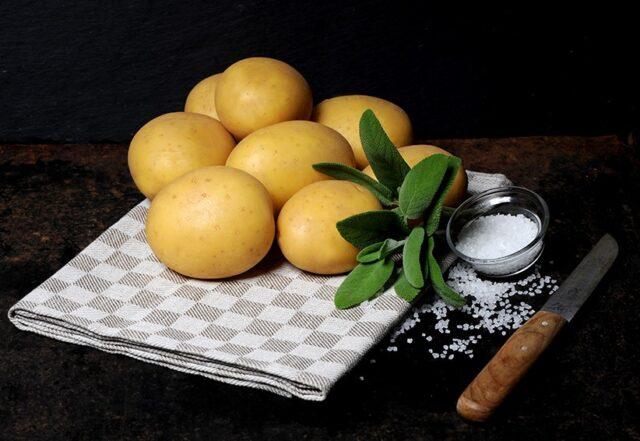
The taste of the tubers cannot be called “memorable” and “delicious”, but many are quite satisfied with it
Ripening time
The first harvest of Madeira potato tubers can be harvested 50-65 days after the appearance of “massive” shoots. Accordingly, despite the fact that it is characterized as mid-season, in regions with a climate favorable for gardening, or if you are simply lucky with the weather during the growing season, it can also be mid-early. However, tubers require more time to fully ripen - 75-90 days.
Productivity
Data from Russian variety trials and information from the originator suggest that when grown on an industrial scale, Madeira potatoes demonstrate consistently high yields (200-480 centners per hectare). According to this indicator, it was strongly (by 50-170 c/ha) “ahead” of the varieties chosen as control - Aspiya and Petersburgsky.
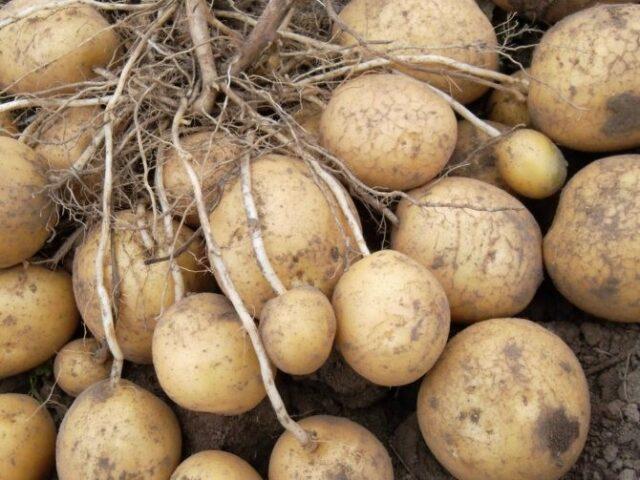
The “record” yield was recorded in the Sverdlovsk region - 632 c/ha
Growing regions
The State Register recognizes the Volga-Vyatka region as the most suitable for cultivating Madeira potatoes. However, not only local gardeners managed to “try it out”. Almost everywhere in Russia, Madeira potatoes perform very well, especially with high-quality agricultural technology.
Disease resistance
If you provide the Madeira potato with minimal standard care and choose the right place for the garden bed, it is extremely rarely affected by diseases and pests. The only exception is moderate susceptibility to late blight.
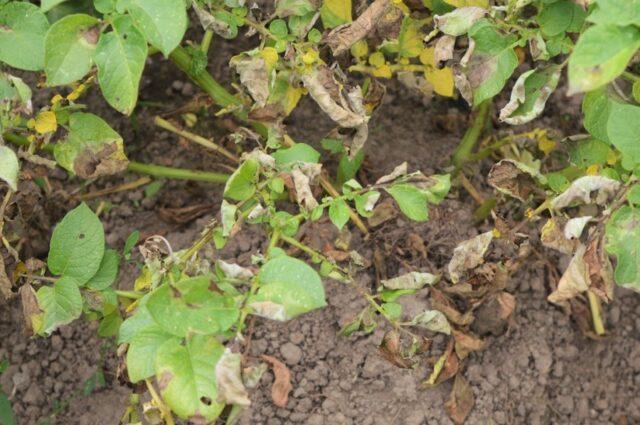
Late blight can affect both Madeira potato tubers and the above-ground parts of the plant.
The Madeira variety has “innate” immunity against the golden potato nematode. The originator also provided it with protection against culturally dangerous viral and bacterial diseases that cannot be treated:
- mosaic virus;
- leaf curling;
- bacterial cancer.
Advantages and disadvantages
Madeira potatoes resist pathogenic microflora much more successfully than pests. In case of “massive” invasions of neighboring areas, it requires preventive treatments to protect against the Colorado potato beetle, wireworm (click beetle larvae) and mole cricket.
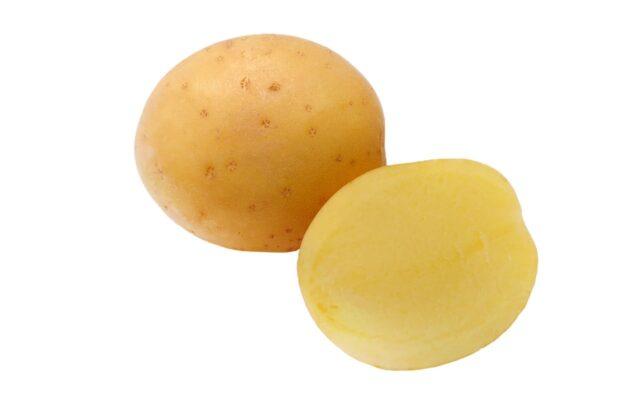
The Madeira potato variety is drought-resistant and, accordingly, is quite suitable for the south of Russia
Pros:
- unpretentious in care, undemanding to the climate in the region of cultivation;
- the presence of “innate” immunity against some “deadly” diseases that are dangerous to the culture, good resistance to other pathogens;
- protection against golden potato nematode;
- drought resistance, the ability to tolerate short-term cold snaps and sudden temperature changes;
- consistently high yields, little dependent on the vagaries of the weather;
- good keeping quality and transportability;
- external presentability, one-dimensionality of tubers;
- versatility of Madeira potatoes.
Minuses:
- good but not outstanding taste;
- tendency to become infected with late blight if the weather and other factors favor the activation of the pathogen;
- the need for timely prevention to avoid pest damage.
Landing rules
To plant Madeira potatoes, choose a well-lit and sun-warmed area with neutral or slightly acidic, fairly nutritious, but loose soil. The bed is prepared in the fall, digging deeply and adding humus (3-4 l/m²). A few days before planting, the soil is well loosened, at the same time enriched with complex mineral fertilizer.
Preliminary preparation of Madeira potato tubers for planting involves germination (it takes 3-3.5 weeks).It is also advisable to sequentially pickle them in a solution of fungicide and biostimulator. The first drug is an effective prevention of late blight and other fungal infections, the second is useful for strengthening the immune system, general endurance and resistance to negative weather and climatic factors.
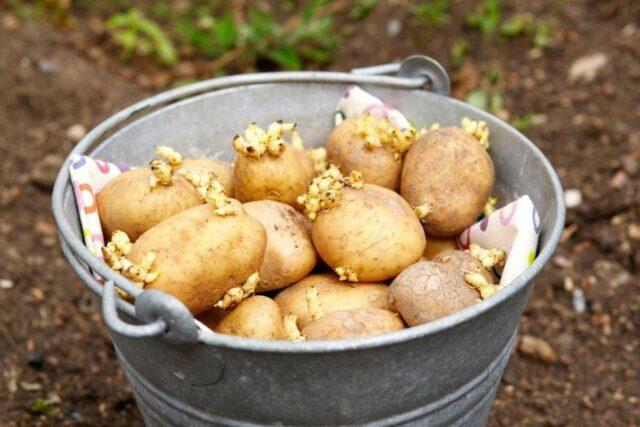
Sprouted tubers sprout much faster
Madeira potatoes are planted when the substrate warms up to 8-10 ° C, and the likelihood of return frosts is minimized. In central Russia this is approximately the end of April or the beginning of May.
The depth of the holes varies from 5-7 to 10-12 cm, depending on the “heaviness” of the soil. The approximate interval between them is 45-50 cm, the row spacing is about 40 cm.
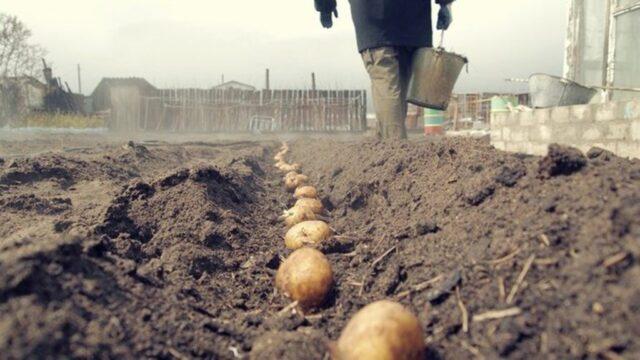
It is advisable to throw about a handful of sand at the bottom so that water does not stagnate around the tubers
Features of care
Madeira potatoes respond to proper care by increasing productivity. It is also an effective preventive measure against diseases and pests.
Agricultural technology includes:
- Watering. Madeira potatoes can withstand even prolonged droughts without much damage to the volume and quality of the crop, so for most of the season they successfully cope with natural precipitation. The only exception is the flowering period and 1.5-2 weeks after it, when the “rudiments” of tubers are formed. If the soil dries out at this time, it must be moistened, spending 4-5 liters of water per bush.
- Feeding.Even if the soil in the Madeira potato bed is quite fertile, it is not recommended to refuse fertilizers. They are applied at the stage of bud formation and 5-7 days after flowering. Complex store-bought fertilizers are best suited for this variety.
- Hilling. During the season it is carried out at least twice - when the stems reach a height of 12-15 cm and after about 2-3 weeks, during the period of mass flowering. Then the procedure is repeated as necessary, but not more than twice a month.
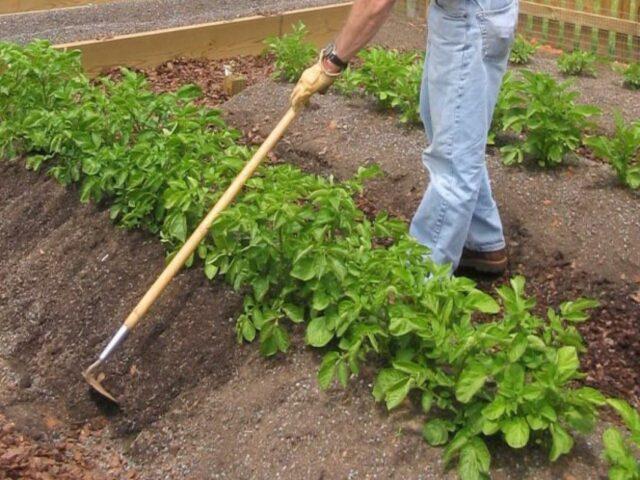
Hilling is necessary, for example, if the stems begin to “fall” or tubers appear from under the ground
Harvest and storage
In central Russia, Madeira potatoes are harvested in the last ten days of August or at the very beginning of September. It is impossible to indicate a specific period, so they are guided by the condition of the tops. You need to wait until it is completely dry and lies on the ground.
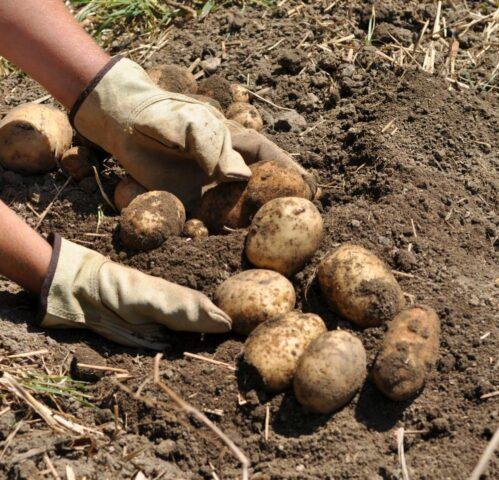
If you rush into harvesting, not only the taste, but also the keeping quality of Madeira potatoes may suffer.
Amateur gardeners dig up tubers using a shovel or pitchfork. When growing this variety on an industrial scale, mechanized harvesting is practiced.
Harvested Madeira potatoes should not be stored immediately. First, the tubers are sorted, getting rid of any “substandard” and setting aside planting material separately for the next season. Madeira potatoes suitable for long-term storage are dried for at least 2-3 hours in the open air under a canopy, excluding direct sunlight, or in a cool room with good ventilation.
The method of storing Madeira potatoes is not of fundamental importance. It is much more important to provide him with optimal or close to optimal conditions:
- air humidity about 70%;
- temperature 2-4 °C;
- good ventilation (drafts are eliminated at the same time);
- lack of light.
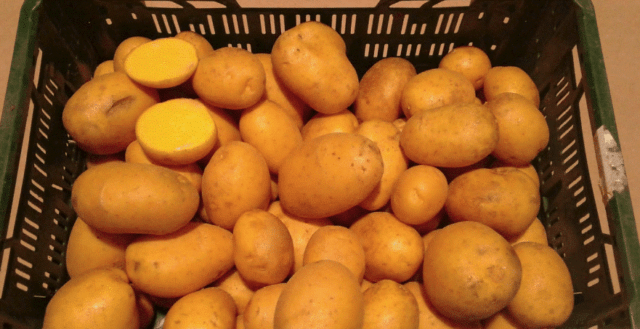
If the temperature drops below optimal - the tubers rot, if it rises above - they germinate
Conclusion
Madeira potatoes are a fairly new mid-early variety that quickly proved themselves to be very worthy and received “official recognition.” It cannot be called particularly outstanding or unique; it is a typical “workhorse” for amateur gardeners who want to annually harvest good harvests of quite tasty and beautiful tubers without spending a lot of time and effort on caring for the plantings.
Reviews from gardeners about Madeira potatoes
